The most primitive among all dinosaurs is Eoraptorlunensis. He got this name in 1993, when the skeleton of this creature was discovered by researchers in the foothills of the Andes, located on the territory of Argentina, in the rocks, which are 228 million years old. This dinosaur, whose body length reached 1 m, scientists attributed to theropods - predatory dinosaurs from the order of poultry.
Therizinosaurus named the most ridiculous dinosaur
His legs resembled bird's legs, each of which had 4 functional fingers, and at the end of the creature’s face there was a “toothless” beak.
 The sauropods were representatives of the suborder of dinosaurs. They were distinguished from other monsters by their incredibly long neck and tail. Sauropods moved on four limbs. These herbivorous dinosaurs settled most of the land in the Cretaceous and Jurassic periods (208-65 million years ago).
The sauropods were representatives of the suborder of dinosaurs. They were distinguished from other monsters by their incredibly long neck and tail. Sauropods moved on four limbs. These herbivorous dinosaurs settled most of the land in the Cretaceous and Jurassic periods (208-65 million years ago).
Scientists believe that the heaviest dinosaurs were:
- Titanosaurs Antarctosaurus giganteus (giant arctic dinosaurs), the fossils of which were discovered in Argentina and India. Their weight reached 40-80 tons. Moreover, the approximate weight of the Argentinean titanosaurus (Argentinosaurus) could reach up to 100 tons. Such estimates were made in 1994 based on measurements of the size of his giant vertebrae.
- Brachiosaurs Brachiosaurus altithorax (ruchechas), which received their name, thanks to their long forelimbs. The weight of these giants was 45-55 tons.
- Diplodocuses of Seismosaurus halli (lizards shaking the ground) and Supersaurus vivianae, whose weight exceeded 50 tons, and according to some reports, could approach 100 tons.
The largest and highest species of dinosaurs
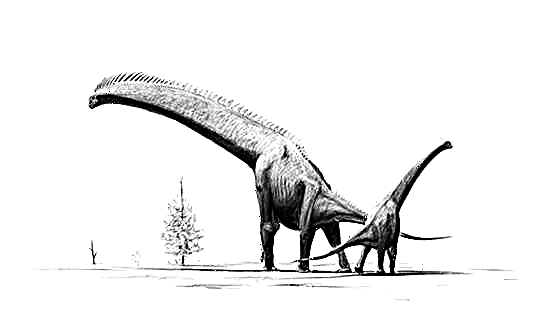 whose skeleton was fully preserved, was discovered in Tanzania, and more precisely in Tedaguru, Brachiosaurus brancai. His remains were found in the Late Jurassic sediments formed 150-144 million years ago. Excavations were carried out in 1909-1911 by German expeditions. Bone preparation and skeleton assembly took place at the Museum of Natural History at Humboldt University of Berlin. The skeleton of a dinosaur was created from the bones of not one, but several individuals in 1937. The total body length of the brachiosaurus was 22.2 m, the height at the withers was 6 m, and the height with the head raised was 14 m. During life, his weight, according to scientists, reached 30-40 tons. The tibia of another brachiosaurus, also kept in the museum, suggests that these dinosaurs could be much larger.
whose skeleton was fully preserved, was discovered in Tanzania, and more precisely in Tedaguru, Brachiosaurus brancai. His remains were found in the Late Jurassic sediments formed 150-144 million years ago. Excavations were carried out in 1909-1911 by German expeditions. Bone preparation and skeleton assembly took place at the Museum of Natural History at Humboldt University of Berlin. The skeleton of a dinosaur was created from the bones of not one, but several individuals in 1937. The total body length of the brachiosaurus was 22.2 m, the height at the withers was 6 m, and the height with the head raised was 14 m. During life, his weight, according to scientists, reached 30-40 tons. The tibia of another brachiosaurus, also kept in the museum, suggests that these dinosaurs could be much larger.
The longest dinosaurs were
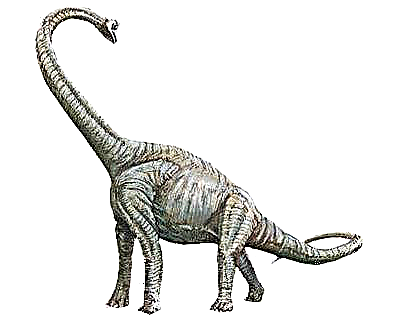 the brachiosaurus Breviparopus, whose body length could be 48m, and the diplodocus Seismosaurus halli, discovered in the US state of New Mexico in 1994, whose body length reached 39-52m. The basis for obtaining such estimates was a comparison of animal bones.
the brachiosaurus Breviparopus, whose body length could be 48m, and the diplodocus Seismosaurus halli, discovered in the US state of New Mexico in 1994, whose body length reached 39-52m. The basis for obtaining such estimates was a comparison of animal bones.
The smallest dinosaurs are considered
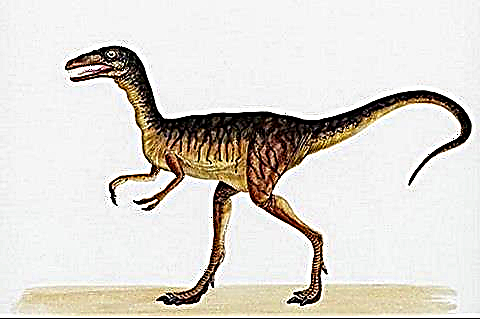 the cosmognatus (elegant jaw) that lived in southern Germany and the southeastern region of France and the little-studied herbivorous fabrosaur that lived in the US state of Colorado. The length of these creatures, from the tip of the nose to the tip of the tail, was 70-75cm. The weight of the first reached 3kg, the weight of the second - 6.8kg.
the cosmognatus (elegant jaw) that lived in southern Germany and the southeastern region of France and the little-studied herbivorous fabrosaur that lived in the US state of Colorado. The length of these creatures, from the tip of the nose to the tip of the tail, was 70-75cm. The weight of the first reached 3kg, the weight of the second - 6.8kg.
Ankylosaurs are considered the most armored
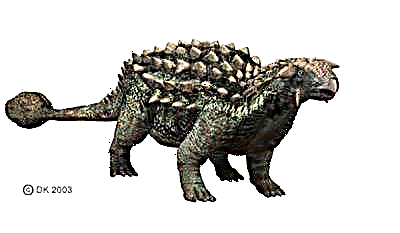 of all dinosaurs that existed on our planet. Their head and back were protected by bone plates, spikes, and horns. The width of their body was about 2.5 m. Their main distinguishing feature was the tail, on the end of which a huge mace flaunted.
of all dinosaurs that existed on our planet. Their head and back were protected by bone plates, spikes, and horns. The width of their body was about 2.5 m. Their main distinguishing feature was the tail, on the end of which a huge mace flaunted.
The largest traces of the prehistoric lizard
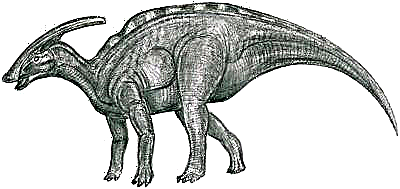 there were traces discovered in 1932 in Salt Lake City, Utah. They belonged to a large hadrosaur (platypus) moving on its hind limbs. The length of the tracks was 136 cm, and the width was 81 cm. Other reports from Colorado and the same Utah spoke of yet another tracks with a width of 95-100m. According to some reports, the width of the traces of the hind legs of the largest brachiosaurus can reach 100cm.
there were traces discovered in 1932 in Salt Lake City, Utah. They belonged to a large hadrosaur (platypus) moving on its hind limbs. The length of the tracks was 136 cm, and the width was 81 cm. Other reports from Colorado and the same Utah spoke of yet another tracks with a width of 95-100m. According to some reports, the width of the traces of the hind legs of the largest brachiosaurus can reach 100cm.
Biggest skull
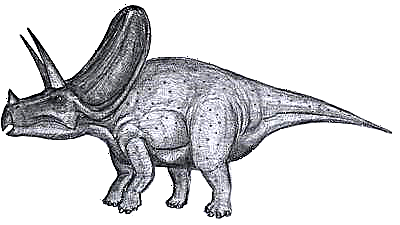 belonged to a torosaur - a herbivorous lizard that wore a huge bone shield around its neck. The length of this dinosaur could reach 7.6 m, and weight - 8 tons. The length of a skull alone, together with a ossified frill, was 3 m, and its weight was about 2 tons. This "brainy" creature lived on the territory of the modern American states of Texas and Montana.
belonged to a torosaur - a herbivorous lizard that wore a huge bone shield around its neck. The length of this dinosaur could reach 7.6 m, and weight - 8 tons. The length of a skull alone, together with a ossified frill, was 3 m, and its weight was about 2 tons. This "brainy" creature lived on the territory of the modern American states of Texas and Montana.
In the line of the most toothy dinosaurs
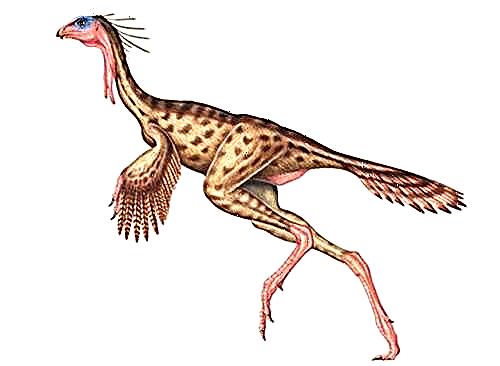 in the first place are the ornithomimids Pelecanimimus (bird-like dinosaurs). In their mouth were more than 220 incredibly sharp teeth.
in the first place are the ornithomimids Pelecanimimus (bird-like dinosaurs). In their mouth were more than 220 incredibly sharp teeth.
Holders of the longest claws
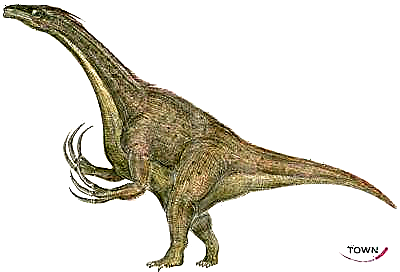 were therizinosaurs found in the Late Cretaceous sediments of the Nemegt basin, located on the territory of Mongolia. The length of their claw along the external curvature could reach 91cm. In Tyrannosaurus rex, for comparison, this value was 20.3 cm. Therizinosaurus had absolutely no teeth, and the skull was quite fragile. This dinosaur, according to scientists, ate termites.
were therizinosaurs found in the Late Cretaceous sediments of the Nemegt basin, located on the territory of Mongolia. The length of their claw along the external curvature could reach 91cm. In Tyrannosaurus rex, for comparison, this value was 20.3 cm. Therizinosaurus had absolutely no teeth, and the skull was quite fragile. This dinosaur, according to scientists, ate termites.
The spinosaur could also boast of its long claws, the total length of which reached 9 m, and the weight was about 2 tons. In January 1983, an amateur paleontologist, William Walker, discovered a 30 cm long claw belonging to a spinosaur near English Dorking.
The largest eggs
Of all dinosaurs known to science, the 12-meter-long titanosaurus Hypselosaurus priscus, which lived on our planet about 80 million, laid off. Fragments of its eggs were discovered in October 1961 in the valley of the French river Durance. According to the assumptions of scientists, its dimensions as a whole were 25.5 cm in diameter, 30 cm in length, and its capacity was 3.3 liters.
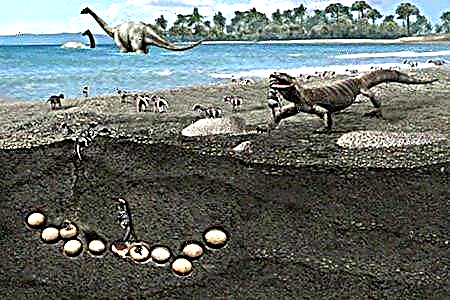 The paths created by the dinosaurs, scientists use in order to determine the speed of these animals. So the path found on the territory of the American state of Texas in 1981 allowed researchers to conclude that a carnivorous dinosaur was able to move at a speed of 40km / h. It is known that some ornithomimids were able to run even faster. For example, the owner of a large brain, a 100-pound Dromiceiomimus, who lived at the end of the Cretaceous in the territory of the modern Canadian province of Alberta, could easily overtake an ostrich, the speed of which can exceed 60km / h.
The paths created by the dinosaurs, scientists use in order to determine the speed of these animals. So the path found on the territory of the American state of Texas in 1981 allowed researchers to conclude that a carnivorous dinosaur was able to move at a speed of 40km / h. It is known that some ornithomimids were able to run even faster. For example, the owner of a large brain, a 100-pound Dromiceiomimus, who lived at the end of the Cretaceous in the territory of the modern Canadian province of Alberta, could easily overtake an ostrich, the speed of which can exceed 60km / h.
The smartest dinosaurs
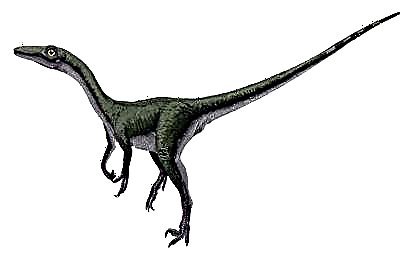 troodontids are considered, whose brain mass in relation to their body mass was comparable with the same parameters that the most intelligent birds possess.
troodontids are considered, whose brain mass in relation to their body mass was comparable with the same parameters that the most intelligent birds possess.
Stegosaurus, who lived 150 million years ago on the territory of modern American states of Oklahoma, Colorado, Wyoming and Utah, could reach a length of 9m. However, the brain of this creature did not exceed the size of a walnut, and its weight was only 70 g, which amounted to only 0.002% of the weight of its entire body, which amounted to an average of 3.3 tons.
If you think that we have told everything about dinosaurs, then this is not so. In fact, there are still a lot of open questions and interesting facts about these ancient creatures.












